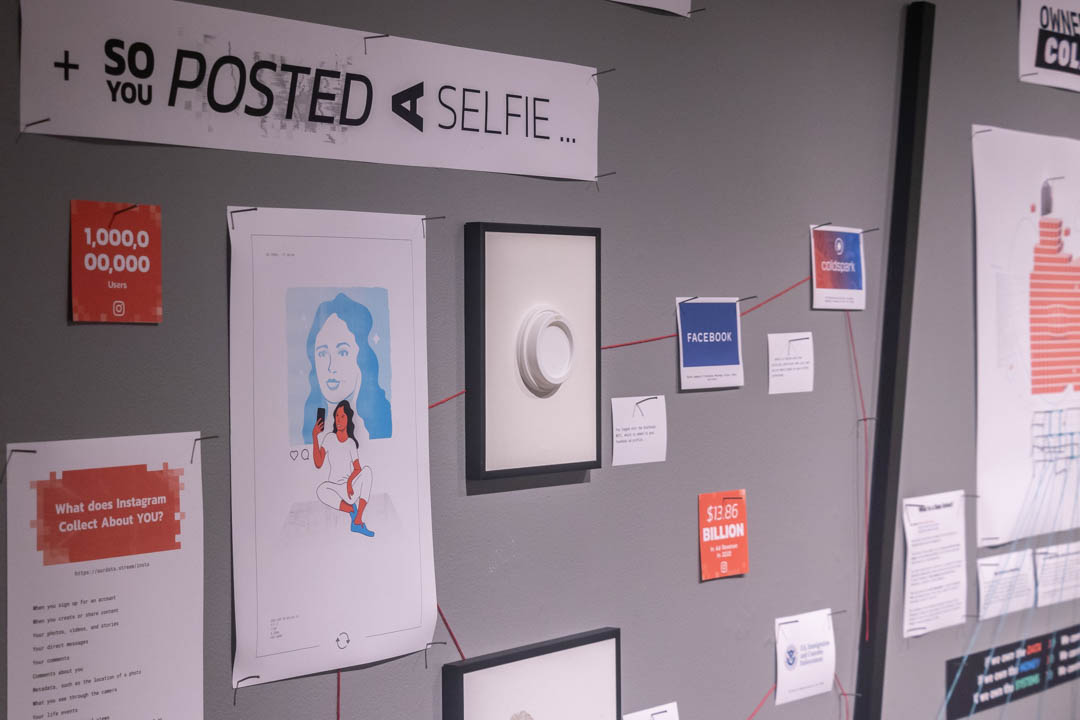
What happens when you post a selfie?
I tried to find out for C/O Commonwealth, a group exhibition at Penn State's HUB-Robeson galleries that explored collective action in Pennsylvania and beyond.
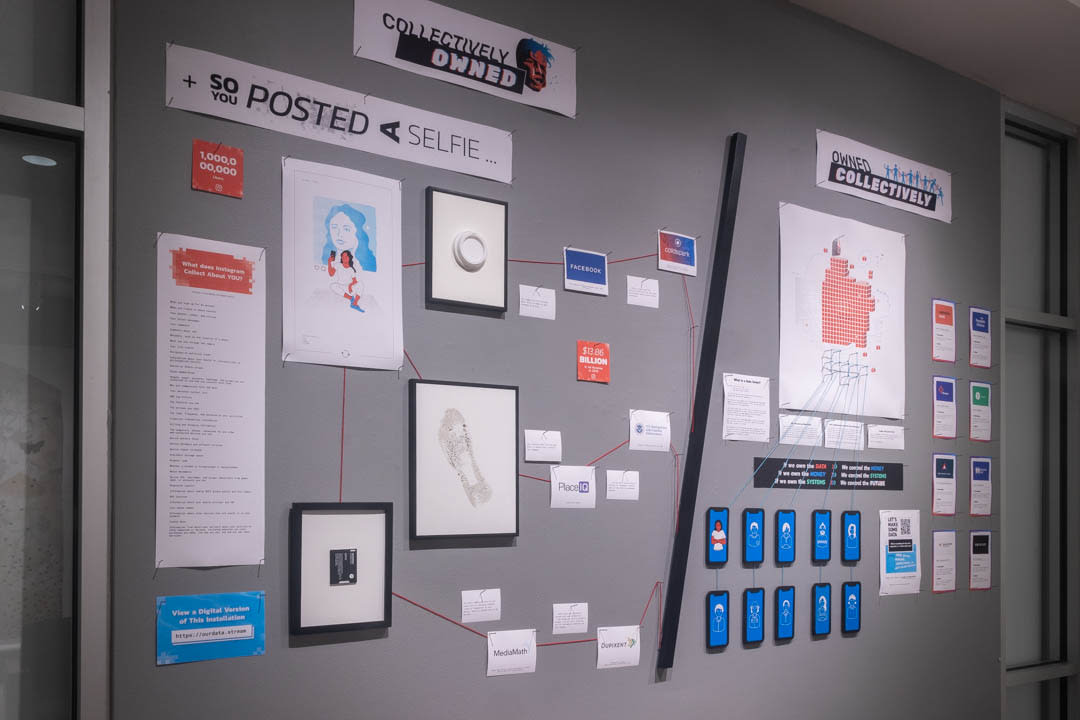
Presented as a sort of conspiracy wall — complete with red string — Our Datastream is divided into two halves: the way things are, and the ways things could be. The first side of the wall begins with an illustration of taking a selfie, and then lists and depicts the various ways that Instagram extracts value from data involved in that simple action. Framed objects act as preserved records of a moment in time, and red string branches out as the relevant user data passes hands among corporations and governments.
The complete list of data that Instagram harvests from their users is unsettling but not unique; I chose that platform due to the ubiquity of the app among college students and the familiar intimacy of the selfie.
A huge forward-slash divides the installation in two, slicing apart the red string, and presenting alternative ways of monetizing and owning digital data. Data cooperatives and unions are an emerging type of business, with experiments in music streaming, healthcare, ridesharing, and other areas of the economy, these efforts let users own and even profit from their data. If big tech companies are making money off your browsing history, why shouldn't you?
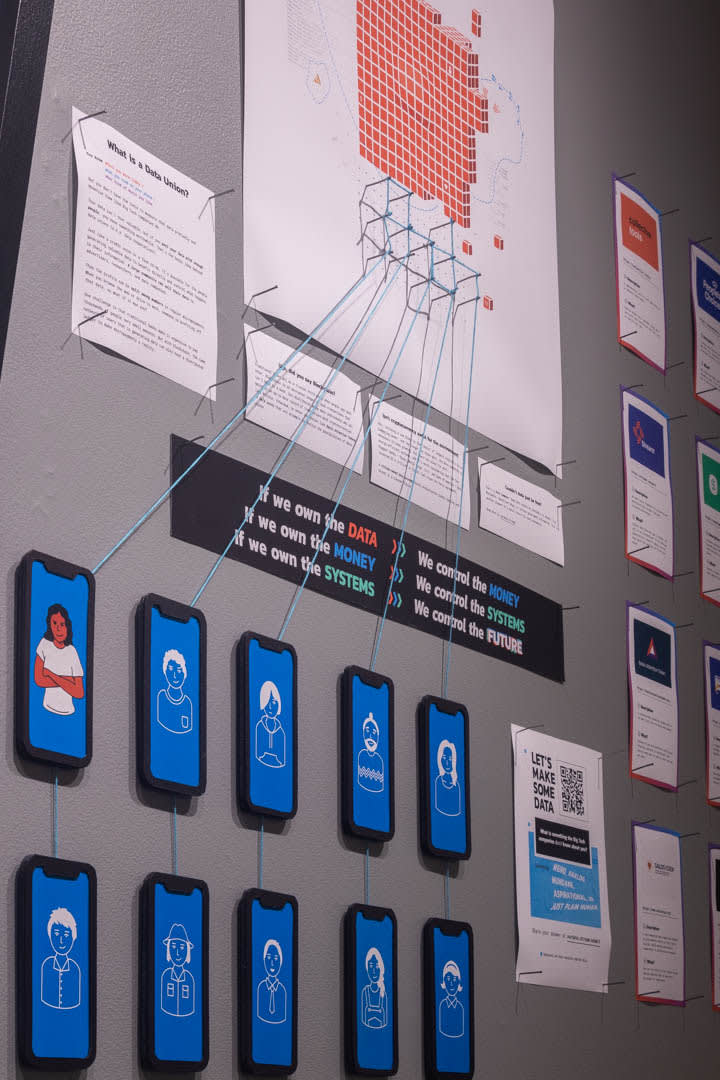
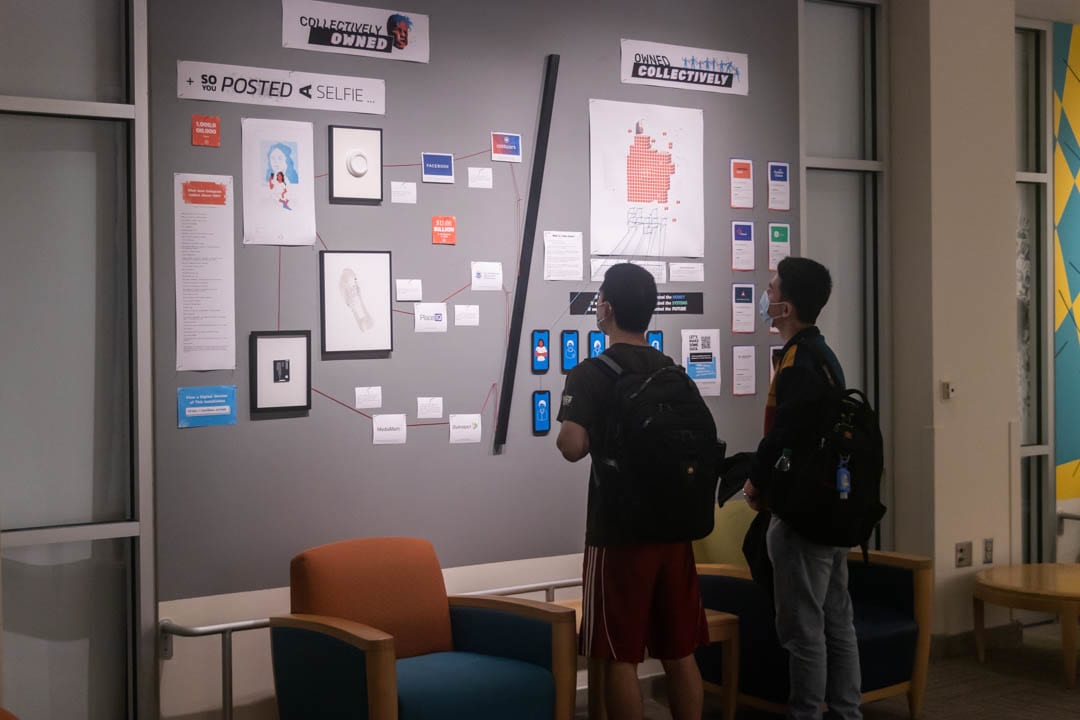
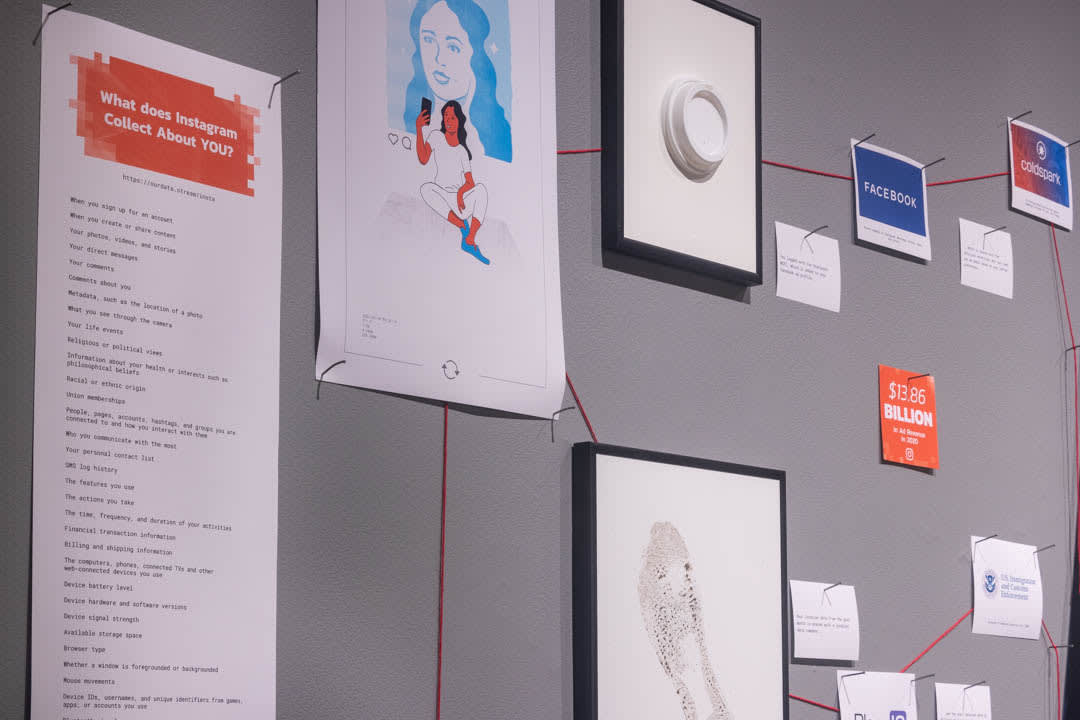
Many user-owned data companies and cooperatives rely on blockchain to enable micro-payments ( e.g. every time someone buys a parcel of data you generated). The infrastructure for these payments has been a challenge for a long time, and while blockchain technologies finally offer a solution, they are very confusing. So I did the leg work and tried my best to explain them for a general audience, which you can read about on the site.
This exhibition opened during the COVID-19 pandemic, so an online version of the project seemed expecially needed. The project website translates all the text, illustrations, and layout into a purely digital medium, which was a fun design challenge: the same, but different!